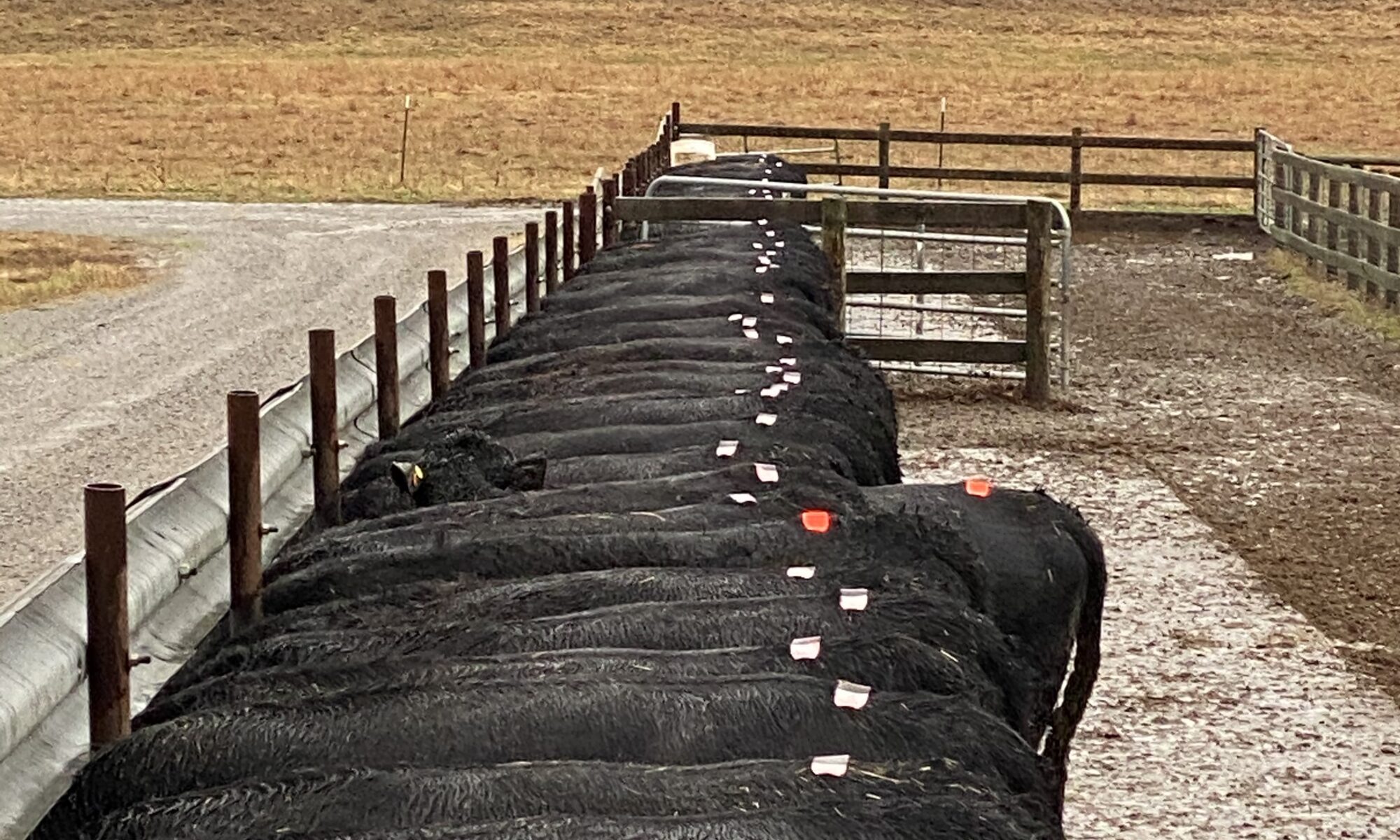

Dr. Troy Rowan
Assistant Professor
UTIA Genomics Center for the Advancement of Agriculture
P: 865-974-3190
We have been selecting cattle to better fit our needs for a very long time. In (relatively) recent years, the tools we have to make these decisions have changed, allowing us to more accurately select animals that fit our breeding objective. These tools have accelerated genetic progress and helped commercial producers become more profitable. Genomics is the most recent innovation in this area and is beginning to see expanded application in commercial cattle populations.
Genetic selection happens in two areas of the commercial herd: First, in selecting bulls, and second, in choosing replacement heifers. Both decisions are critical for advancing a profit-oriented breeding objective, and both can be aided through the use of genomics.
Genomics and Bull Selection
Since the 1970s, beef producers have received genetic predictions from expected progeny differences (EPDs). EPDs are statistical estimates of the genetic component of a trait that an animal can pass on to their offspring. By estimating just the genetic component of traits, we can make more accurate comparisons between animals across different environments & managements and make predictions in animals that will never express an important phenotype themselves (e.g., milk production in bulls). Traditionally, EPDs relied on phenotypic recording by producers, aggregated at breed associations, and integrated with the breed’s pedigree. Pedigree information allowed phenotypes of related animals and progeny to inform the EPD estimates for individuals.
Because EPDs are a statistical estimate, they come with a degree of uncertainty since we do not necessarily know an animal’s “true” genetic potential. The more progeny records that an animal has contributing to its EPD, the more confident we are that the EPD represents its true genetic merit. We measure this confidence as an accuracy value that ranges from 0 to 1. Commercial operations rarely have the benefit of purchasing bulls with progeny records in genetic evaluations. Due to limited information, purchasing young, unproven sires carries economic risk, as an animal’s EPD may not sufficiently represent the true genetic potential.
In the late 2000s, the first genomic tests were delivered to the beef industry, allowing information on actual DNA content to be integrated into EPD calculations. We refer to these as genomically-enhanced EPDs (GE-EPDs). The result of including genomic information is an increased EPD accuracy for young, unproven animals without progeny information. In practice, this means that bulls who have never sired a calf can receive the same increase in EPD confidence that a bull would receive if 20-30 progeny had entered the genetic evaluation. The table below shows “progeny equivalents” for various traits reported by the American Angus Association. These can be interpreted as the number of progeny needed in the genetic evaluation to generate the same accuracy as a genomic test.
| Table 1. Genomic test progeny equivalents for select traits in Angus genetic evaluation | |
| Trait | Progeny Equivalents |
| Calving Ease (CED) | 28 |
| Weaning Weight (WW) | 23 |
| Yearling Weight (YW) | 22 |
| Mature Weight (MW) | 14 |
| Heifer Pregnancy (HP | 17 |
| Milk (MILK) | 35 |
| Marbling (MARB) | 10 |
| Source American Angus Association | |
This makes genomic tests an essential tool for making bull selection decisions. A genomic test does not change the number or interpretation of EPDs. All it does is increase our confidence that they represent an animal’s actual genetic potential. We can be more confident that we will get the genetic potential that we are investing in. Bulls have much larger genetic footprints in our herds than individual cows, which makes correct selection decisions all the more critical. GE-EPDs are one way we can mitigate risk and ensure that we are making genetic progress as efficiently as possible.
Genomic Testing for Commercial Heifers & Steers
While genomic testing is a no-brainer for seedstock herds that market bulls to commercial customers, the costs of testing have declined such that they are becoming more practical for use in commercial contexts., and can open marketing opportunities for terminal calves
Commercial genomic tests are helpful in three main ways:
- Identifying heifer genetic potential: New genomic products allow commercial heifers to receive genetic predictions for multiple relevant traits. While not the same GE-EPDs in most cases, these still provide valuable context about the genetic potential of a female. Traditionally, heifer selection was based on phenotypic performance, age, or cow family. Genomic tests add EPD-like information to the decision. We should remember that these tests only estimate genetic components of traits and are not phenotypic predictions. So, for lowly-heritable traits like fertility, they may only account for ~5% of the animal’s actual phenotype. Additionally, we must test more heifers than we plan to keep to see a return on investment. The most valuable output of commercial genomics may be in identifying crossbred heifers with greater hybrid vigor.
- Making strategic mating decisions: Using commercial heifer genomics to inform bull purchasing is an often-underrated application. By identifying strengths and weaknesses within the female side of our herd, we can make tailored bull purchases that fill in weak points.
- Marketing terminal calves: Emerging markets are interested in paying for animals based on genetic potential. Commercial genomics may allow producers to add value to their calves sold at weaning that have exceptional genetic potential for feedlot and carcass profitability. In some cases, average genomic scores on a herd’s heifer crop can be extrapolated to steers in added-value programs.
Genomic testing continues to decline in price, and applications to commercial herds will continue to grow over the coming years. That said, there is no more important place for genomics than in helping increase the accuracy of bull selection for commercial breeders.